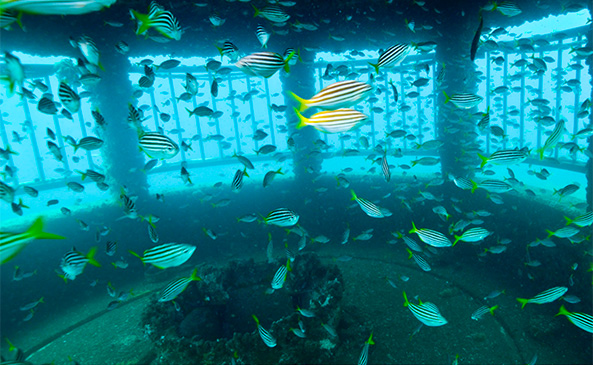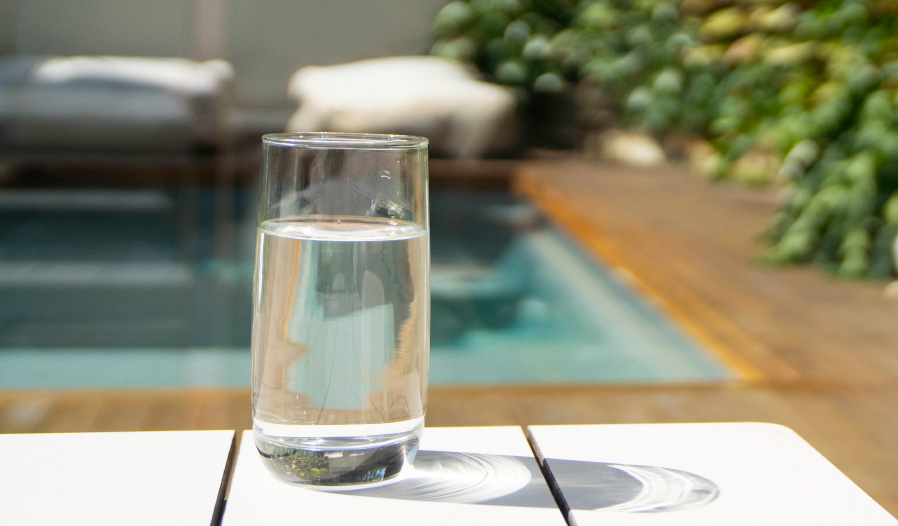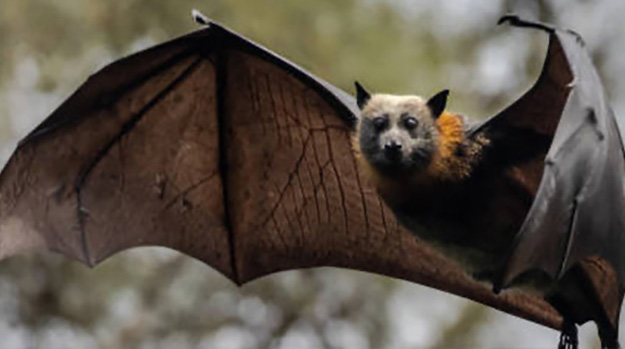


The Sydney Desalination Plant was built with a strong focus on the environment. Today, minimising environmental impacts remains a high priority and focus for our business.
All electricity consumed by the Plant is 100% matched by renewable energy certificates (large-scale generation certificates and small-scale technology certificates). We also developed a variety of programs over many years to protect the local land and marine environment.
One third of the Plant’s site at Kurnell has been kept as a conservation area, where native species of flora and fauna are regularly monitored.
Our six-year marine monitoring program in the local seawaters was one of the most stringent and comprehensive programs of its kind ever undertaken for a desalination plant of this size.





Path to net zero emissions
SDP is committed to minimising our environmental footprint while providing a secure supply of high-quality drinking water to Greater Sydney.
We are proud to continue working toward reducing our carbon emissions for the energy used to produce drinking water at our Plant at Kurnell. Our scope 2 electricity usage is 100% matched by renewable energy certificates (large-scale generation certificates and small-scale technology certificates).
As we strive towards becoming a leading, sustainable producer of desalinated drinking water, our focus is on reducing any residual carbon emissions through our continued work on a decarbonisation pathway.



Renewable energy
Desalination is an energy-intensive process. With that in mind, the Sydney Desalination Plant project is required to be powered by 100 per cent renewable energy. The Plant requires approximately 38 megawatts of electricity at full production.
All electricity consumed by the Plant is 100% matched by renewable energy certificates (large-scale generation certificates and small-scale technology certificates).
In FY24, around 82% of energy is powered by renewable energy produced at the Capital Wind Farm – one of the largest wind farms in NSW. Located near the NSW and ACT border, the Capital Wind Farm generates about 140 megawatts from 67 turbines.
That’s about the same amount of energy used by 69,700 homes and three times the power needed to run the Plant. Each turbine is 80 metres tall, and its rotors span a diameter of 88 metres.
Our water customers have told us that they are supportive of our Plant using renewable power, which is purchased through a long-term contract under the conditions of our Greenhouse Gas Reduction Plan (GGRP).



Conservation area
The Plant’s site covers 45 hectares, including a 15-hectare environmental conservation zone that is home to several species of native flora and fauna.
This area is protected and closely monitored, with programs to survey the number of grey-headed flying foxes and green and golden bell frogs. Bush regeneration and removal of invasive flora from the conservation area is carried out on an ongoing basis to ensure the animals have a safe place to feed, breed and roost.
A local colony of grey-headed flying foxes resides within the Plant’s environmental conservation area and is recorded and monitored by employees each month.
The flying foxes are listed as a threatened species and play a crucial role in pollinating a wide range of flora.





Koala feeding program
The Plant is proud to be part of a program that provides eucalyptus leaves to feed a colony of orphaned and rescued koalas at the Symbio Wildlife Park at nearby Helensburgh. Koalas – endangered in Australia and extinct across the Kurnell Peninsula – each eat about half a kilogram of eucalyptus leaves daily.
As part of the program, about 800 eucalypts were planted in an unused area of the site. An irrigation system was also installed to supply the trees with water during summer.
The trees are a mix of Forest Red Gum (Eucalyptus tereticornis), Swamp Mahogany (Eucalyptus robusta), and White Stringybark (eucalyptus globoidea), which are all endemic to the Kurnell Peninsula. They were specifically chosen to feed koalas, which are notoriously fussy eaters.
Eucalyptus leaves were first harvested in 2024. They are now regularly collected and sent to feed koalas at Symbio Wildlife Park, which has its own koala breeding program.
The eucalypts will also provide a wildlife corridor between the conservation area and the nearby La Perouse Land Council lands and Towra Point Wetlands at Botany Bay.
This project is a small contribution towards helping ensure the survival of one of Australia’s national icons and improving the site's biodiversity.



The ocean
We are proud that our desalination operations and processes to make fresh, clean drinking water from seawater have minimal impact on the local marine environment.
About 58 per cent of the water used during the desalination process is returned to the ocean.
This water, known as seawater concentrate (effectively salter seawater), is transported back to the ocean via an outlet tunnel and specially designed outlet dispersion nozzles. These nozzles make sure the water mixes rapidly and returns to normal seawater salinity and temperature within a short distance of its discharge point so as not to harm the local marine environment.
The Plant’s desalination process has been thoroughly examined, with a world-first independent study finding no significant impacts from the Plant on the local marine environment.
The six-year UNSW study
The study was led by the University of NSW with a team that included scientists from NSW Fisheries Research and Southern Cross University. It took place at six underwater locations over six years, through periods when the Plant was under construction, operating, and idle.
This enabled the team to rigorously monitor for impacts and recovery among marine life from the effects of the Plant pumping seawater concentrate back into the ocean.
The study’s lead, Dr Graeme Clark, described the nozzles that return the seawater concentrate as “so effective at diluting the brine that concentrations were almost at background levels within 100 metres of the outfall”.
The research also found that some invertebrates – such as barnacles – increased in numbers near the outlet nozzles.
You can find more information about the independent marine study here.




Social
and Governance
We place a high priority on establishing best social & governance practices in our operations and are committed to meeting all regulatory requirements.
Find out more


Frequently Asked Questions
- Is the Sydney Desalination Plant operating?While the Plant was originally designed to operate only in times of drought, it has remained operational since 2019 to help address several storage dam water quality issues arising from bushfires, flooding and significant maintenance tasks in Sydney Water’s supply network.
The Sydney Desalination Plant’s WICA Network Operator’s Licence enables the Plant to remain operational, recognising that the Plant has always been, and will continue to be, an essential component of Sydney’s water management and an integral part of our city’s water-resilient future. - How much water does the Plant produce?The Plant can provide up to 15 per cent of Sydney’s average drinking water needs without any reliance on rainfall.
It treats, filters and re-mineralises seawater to produce up to 91.25 gigalitres per annum of high-quality drinking water.
Under our WICA Network Operator’s Licence, the Plant will operate on a “flexible full-time basis”, producing between about 20 gigalitres to 91.25 gigalitres every year. - What does desalinated water taste like?Sydney Desalination Plant water is treated to taste the same as Sydney’s other drinking water.
Like dam water, water from the desalination plant is treated to meet Australian Drinking Water Guidelines, which makes it among the best in the world. - Who owns the Plant?Sydney Desalination Plant is jointly owned by the Ontario Teachers’ Pension Plan Board and the Utilities Trust of Australia, which is managed by Morrison. Find out more on our About Us page.
- Why is desalination important?The Sydney Desalination Plant is Sydney’s only major sources of non-rainfall dependent drinking water. It is one effective way of securing Sydney’s water supply against the effects of climate change and natural disasters and the increase in demand due to population growth, warmer weather and urban greening projects.
While the Plant was originally designed to respond to Australia’s severe millennium drought, recent experiences have demonstrated that drought is only one type of event that requires support from the Plant to ensure clean and safe drinking water for Greater Sydney.
The Plant has been a reliable drinking water supply during floods and bushfires, which caused water quality challenges from time to time in Sydney’s storage dams. - Where does the water go?The Plant can supply water to homes and businesses south of Sydney Harbour and as far west as Bankstown, as part of all their water supply.
Sydney Water uses a variety of water sources to supply customer needs. Where your water comes from depends on demand and where in Sydney you live.
If you live in the blue-shaded area on this map, you may receive water from the dams, the Sydney Desalination Plant or a combination of both. The Plant's water proportion will change throughout the day due to variations in supply and demand.
Everyone will benefit from desalination because it allows more water to be left in the dams, which means a more secure water supply for Sydney. - How much energy does the Plant use?The Sydney Desalination Plant requires roughly 38 megawatts at full production and is 100 per cent powered by renewable energy.
The average energy needed to provide drinking water to one household is about the same as the energy used to run a household fridge. - What’s the impact on the environment?Sydney Desalination Plant places a high priority on minimising any environmental impacts – both on land and in the water.
To support this, the Plant has put in place a world first stringent six-year marine environment monitoring program. The marine environment was monitored for three years before construction and three years after the Plant became operational. It demonstrated that the Plant has minimal effect on the marine environment.
On land, a third of the Plant site at Kurnell has been maintained as a conservation area. This area is protected, and native species of flora and fauna are regularly monitored. This includes a program to survey the numbers of grey-headed flying foxes and green and golden bell frogs in the area.




